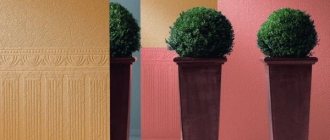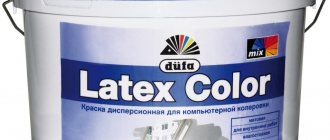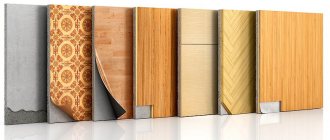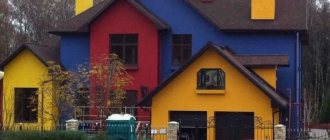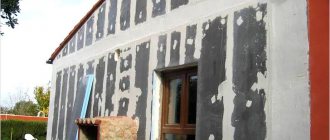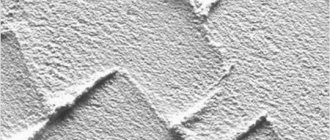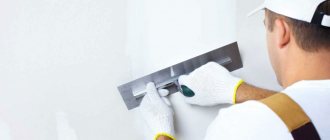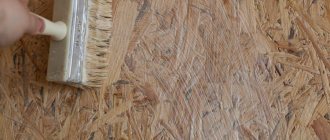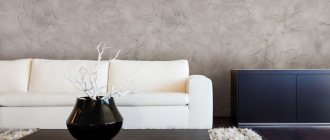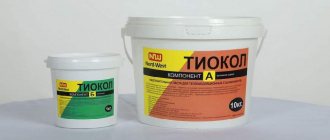The beauty and durability of any building is due to high-quality construction work. Compliance with certain technical rules and the use of high-quality materials increases the building’s resistance to negative environmental conditions, ensures ergonomics and aesthetic performance. Modern renovation involves the use of special coatings for interior and exterior work, which improve the functions of load-bearing structures. One type of such mixtures is primer for facades.
Purpose and application
Facade primer is a special coating for application to the outside of houses. The solution improves the adhesion of building materials to decorative elements and levels the outer walls. In the conditions of further finishing work, the consumption of the finishing coating is reduced, the strength of the building and resistance to weather fluctuations are increased.
Composition and technical characteristics
The primer for the facade differs from other types of external coatings, taking into account the increased requirements for them. The necessary qualities are provided by the chemical and physical composition. The presence of certain components depends on the type of construction impregnation. The main options are represented by the following primers.
- Acrylic - the main substance is a solution of polymer resin. Additional elements are water, plant components, sand, abrasive particles, and dyes. The solutions are universal, suitable for most external walls. They have virtually no toxic effect and are odorless. Dries very quickly upon application. Dilutes well with water.
- Alkyd - the base substance is a synthetic polymer that dries quickly and prevents corrosion. Therefore, it is successfully used for initial processing of wood and metal structures. Has high hygroscopic properties. Relatively inexpensive type of base. An excellent base for ceramic tiles.
- Mineral - the composition includes components such as lime, cement, gypsum. The solution serves as a base when working with wet mineral materials - concrete, brick, plaster. Thick consistency evens outer coatings. However, the external primer should be selected taking into account the type of base coating.
- Universal two-component based on a polyurethane component - suitable for most walls as a starting solution. Easy to use, dries quickly, and is highly resistant to external factors. The only drawback is the high price of a universal primer.
- A base solution with alkali-resistant quartz sand creates an outer surface with a rough structure. Thanks to its special composition, it has unique properties that promote adhesion of materials.
Considering the variety of façade primers, before purchasing, you should read the instructions for use.
Attention! Application features, technical parameters and consumption indicators of external impregnations are indicated on the label attached to the package.
Consumption per 1 m2
For different types of mixtures, there are certain criteria for the volume needed for application. The composition of the primer for exterior use determines the amount of substance provided for sufficient impregnation of the walls. The calculation is carried out per square meter of coverage.
- If you use acrylic facade primer, take up to 120 - 150 ml.
- Alkyd mixtures for wood, chipboard, MDP use from 100 to 120 ml.
- When you need to prepare metal surfaces for painting, you will need 80 - 120 ml of starting composition.
- When using primers for deep penetration of facades, you should take about 100 ml.
- The amount of mineral solution is 300 ml.
- Most anti-corrosion exterior primer mixtures are calculated based on an amount of 60 to 80 g per square meter.
However, before purchasing, you should read the information on the label, where the manufacturer indicates the exact amount of the exterior mixture required to treat external surfaces. In this case, it is necessary to take into account the type of material on which the primer will be applied. The more pores and small cracks, the more mixture you will need.
Hygroscopic, friable material may require several layers. The volume of the consumable solution is affected by environmental conditions and the type of decorative coating. If the main walls of the building are subsequently covered with siding, porcelain stoneware, stone, then one layer of base mortar is applied. Before painting, the surface should be primed at least twice.
Calculation formula
The consumption of primer material is determined by a formula that takes into account the following parameters:
- indicator of outer surface area;
- the amount of primer per square meter, which is indicated in the manufacturer’s instructions;
- multiplicity of layers.
The product of all parameters provides objective information about the volume of external primer that is necessary to carry out basic work.
Peculiarities
The primer for facade work differs from other coatings in its properties. External walls of buildings or surfaces are affected by climatic conditions. Therefore, they must have special indicators:
- high resistance to atmospheric changes, humidity, temperature fluctuations;
- good penetrating ability;
- improved adhesive properties;
- increased insulating properties;
- do not change the functions of external structures;
- strengthening effect.
During application, the components penetrate into voids, small cracks and pores. Chemical compounds, getting deep into the walls, harden, providing the necessary insulating properties. There is a strong adhesion of the material to each other. The external primer also creates a surface layer that will protect the walls from negative influences and serve as an additional basis for further finishing work. Subsequently, when applying the finishing solution, the base composition does not allow the decorative paint to penetrate deeply. Therefore, the surface layer looks attractive and lasts longer.
Why do you need façade primer?
When considering the issue of painting external walls, many home owners are often interested in the advisability of using a primer when finishing the facade. It is clear that in order for the facade walls to look beautiful, it will be necessary to use a lot of materials such as putty mixtures and plaster solutions, as well as tinted or structural paint for the façade. But why a primer is needed and what functions it performs remains completely unclear. Unreasonable saving of money and lack of understanding of the importance of priming walls leads to negative consequences when cracks and peeling of the decorative coating begin to appear on the repaired beautiful surface of the external walls. The elegant exterior of the house gives way to a sloppy façade, covered with mold and moss, with peeling paint and crumbling plaster. Such unpleasant phenomena often occur due to violations of the technology for performing facade work, in which the important operation of priming the walls was missed. In order to put the external walls in order again, you will have to spend much more money and effort.
Primer selection and application methods
In order for the external walls of a building to last as long as possible, it is necessary to adhere to the recommendations for choosing a primer and its application. The mixture option is determined based on the type of base coatings. Compliance with these conditions improves the quality characteristics of the house.
Wooden facades
Surfaces made of natural materials must be well impregnated, given their tendency to accumulate moisture and have a high probability of being damaged by fungus and parasites. Therefore, preference is given to alkyd wood primers for exterior use with antiseptics and fungicidal components.
Brick and concrete facades
To ensure that the surface lasts a long time and has a good aesthetic appearance, the best primer option for concrete and brick for exterior use is bark beetle impregnation. The rough structure provides high adhesive properties and exhibits water-repellent function. Mineral and universal mixtures based on polyurethane are also suitable.
Metal facades
The main task of an external primer for metal is to prevent corrosion of the coating. Therefore, enamel primer and rust converters are used for these purposes. After applying such a base, the finishing layer can be easily applied in an even layer.
How to choose a primer
When the time comes to choose a primer for finishing external walls, you always pay attention to the main selection criterion - taking into account the type of material of the wall surfaces. Of course, even beginners know about this important nuance. No one will treat the plank cladding of a wooden facade or stone walls with primer for metal or drywall. According to experienced builders, in order to choose the right primer, you should pay attention to the basic rule - the material must meet the criteria for outdoor work. In this case, you can be sure that in conditions of temperature changes from +40 in hot summers and -40 in bitterly cold conditions, under torrential downpours and prolonged snowfall, the painted facade for a long time, like a beautiful business card, will speak of the foresight and foresight of the owners Houses.
To treat facades, it is recommended to choose a primer with waterproof properties and resistant to temperature changes.
Rules for applying the mixture
Certain priming steps must be followed.
Attention! If the procedure and equipment are violated, the service life of the facility is reduced and the quality of external finishing work is reduced.
Therefore, you should not neglect the processing rules, which consist of the following points.
- It is important to prepare the base surface for applying impregnating mixtures. To do this, the base should be cleaned of dirt and rust, and large and small cracks should be sealed.
- Study the instructions for each container with the mixture. When using concentrated products, the primer should be diluted to the desired consistency.
- Treat the surface from top to bottom using special tools. It is most convenient to use a roller, spray gun or brush. Depending on the type and properties of the base material, priming can be done one to three times.
- Leave the solution on the surface until completely dry. The average period is about 24 hours. If there is high humidity or significant fluctuations in ambient temperature, you must wait a few days.
At low temperatures, it is undesirable to carry out priming work on external surfaces. Because this can lead to a violation of the properties of the mixture. It is better to wait until the thermometer rises above + 5 degrees.
Preparatory work
As an example, we use the preparation of a concrete base for priming. This material is characterized by a finely dispersed monolithic structure. To put it more simply, it is almost smooth. Characteristic features of concrete in contact with other materials:
- adhesion to putties, adhesives and wallpaper is very poor;
- the putty very soon begins to peel off;
- Cracks appear on plastered surfaces.
Progress of preparatory work:
- carefully clean the concrete surface from dirt and dust (this can be done with a high-pressure stream of water);
- wait for the surface to dry completely;
- we get rid of all existing defects (cracks, bumps, etc.);
- We apply a deep penetration composition that will strengthen the structure of the material;
- We level the base.
Advantages and disadvantages
The use of an external primer under the finishing coat is a mandatory step when performing finishing work. The use of such solutions has significant advantages, which are presented:
- high efficiency, taking into account the extended service life of buildings;
- good aesthetic qualities for many years;
- disinfecting properties, thanks to various antiseptic additives;
- environmental safety;
- affordable pricing policy.
However, there are some disadvantages that occur when choosing a mixture.
- high cost of universal impregnations, which are used for application to several types of building materials;
- the need to process many surfaces several times;
- different penetrating ability, which is determined by the thickness of the mixture;
- It's hard to find a primer for interior and exterior use.
Alkyd
The cost of alkyd primers is 790-5600 rubles.
Main technical characteristics:
- type of work: external, internal, universal;
- tinting: possible;
- gloss level: matte;
- thinner: solvent.
Alkyd primers work not only on concrete, but also on natural stone
Peculiarities
The material is intended for external and internal work. The primer creates an adhesive bridge between the base and the finishing coating. This is the optimal solution for painting.
Method of application
Like all other primers, the composition is applied with brushes, sprayers, and rollers.
Review of popular manufacturers
Building materials stores offer a wide selection of facade primers. Therefore, it is difficult for the buyer to navigate when choosing a mixture. There are popular manufacturers that have proven themselves to be the best thanks to their quality products. Most often, consumers prefer the following brands.
- CERESIT CT 15 - used for application to walls before covering with paint or silicate plaster.
- CERESIT CT 16 is a basic impregnation that is suitable for finishing mixtures based on acrylic, silicone, and facade paints. Due to the content of quartz sand, the adhesion of decorative solutions is improved. Has a water-repellent effect. After application, no color development of the base building materials is observed.
- Water-dispersion primer, which is designed for deep penetration for exterior use, ST 17 - quickly and well saturates the walls, creating a stable inner layer. Prevents the foundation from collapsing over time. Does not allow water to pass through, protects the building from temperature changes. Suitable for exterior surfaces made of concrete, plaster, lime, masonry, plasterboard, fiberboard and other materials.
- Impregnation for facade work or concrete contact manufacturer KNAUF - the mixture is represented by a combination of acrylic base, sand, cement, fillers, which promote high adhesion of materials. Recommended for floors and walls with low moisture absorption capacity. The roughness of the primer after processing allows the finishing coat to firmly adhere to the surface.
- The basis for facades is Tiefengrunt - solutions developed specifically for porous materials. The main component is alkali-resistant quartz sand.
- Facade primer Tex pro 10 kg - intended for mineral-based surfaces. Contains acrylate dispersion, water and additives. Facade primer Profi can be applied to walls that were previously painted with dispersion and perchlorovinyl paints.
- Tikkurila solution for wood coatings - finishing impregnation on wood for exterior work fits well on the primed surface of wood.
Proper selection and application of external primer guarantees high quality repairs and a long service life of the main structures of the house.
